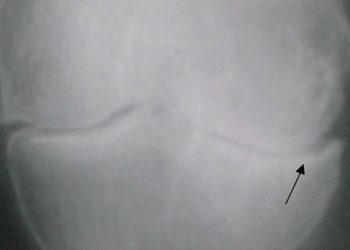2 Minute Medicine Rewind August 12, 2019
Efficacy of prehospital criteria in identifying trauma patients susceptible to undertriage
While the early recognition of severe traumatic injury is associated with improved morbidity and mortality, undertriage has been associated with poorer patient outcomes. Previous research has shown that tachypnea and blunt thoracic injury are associated with undertriage. In this retrospective cohort study, researchers reviewed 3123 lower-level adult activations (2014-2016) at a single institution to determine whether other prehospital criteria can be used to identify patients at risk of being undertriaged. Undertriage was defined as lower-level activation during an incident that in fact met higher-level criteria, or cases requiring life-saving interventions within 1 hour of arrival at the hospital. Researchers found that of the patients included in the study, 92.1% were correctly triaged to the lower-level designation. In assessing patients that were undertriaged, 111 patients (3.6%) met additional higher-level criteria of tachypnea and blunt thoracic injury. In addition, 83 patients (2.6%) met other higher-level triage criteria, including a systolic blood pressure <90 mm Hg or Glasgow Coma Scale (GCS) <9 points. A life-saving intervention within 1 hour of arrival was required in 52 of patients that had been undertriaged. Based on a adjusted logistic regression, age (OR 1.07, 95% CI 1.03 to 1.10), male sex (OR 1.39, 95% CI 1.04 to 1.85), lower GCS scores (OR 1.62, 95% CI 1.53 to 1.71), tachypnea (OR 1.24, 95% CI 1.19 to 1.28) and hypotension (OR 1.14 per 5-mm Hg reduction, 95% CI 1.11 to 1.18) were associated with increased odds of undertriage. In keeping with previous studies, patients with severe chest injuries were more likely to be undertriaged when compared to patients with severe injury to the abdomen, pelvis, or head (p<0.001). Interestingly, a number of the predictors identified in this study represent predetermined triage criteria, and therefore, the findings of this study may indicate that undertriage may be due, in part, to breakdowns in communication between prehospital and emergency department providers.
Patients that use clean intermittent self-catheterization (CISC) are at an increased risk of repeated symptomatic urinary tract infections (UTIs). While the prevention of UTIs with continuous antibiotic prophylaxis in this patient population has been previously studied, results have been inconsistent. In this randomized controlled trial, 404 community-dwelling users of CISC with recurrent UTIs were randomized to receive either antibiotic prophylaxis once daily or no prophylaxis for 12 months, to determine whether continuous antibiotic prophylaxis reduces the incidence of symptomatic UTI. The antimicrobials given were 50 mg nitrofurantoin, 100 mg trimethoprim, or 250 mg cephalexin. Researchers found that the incidence of symptomatic antibiotic-treated UTI over the 12-month period was significantly reduced in the intervention group (RR 0.52, 95% CI 0.44 to 0.61, p<0.0001), corresponding to a 48% reduction. Antibiotic resistance was, however, more frequent in urinary isolates from the prophylaxis group. This study therefore shows that continuous antibiotic prophylaxis is effective in reducing UTI frequency in CISC users. The use of antibiotic prophylaxis, however, must be weighed against the increased risk of antibiotic resistance to urinary bacteria.
Preterm birth is the leading cause of infant mortality and neonatal morbidity. Maternal obesity is associated with an increased risk of gestational diabetes and hypertensive disorders of pregnancy, which can, in turn, contribute to medically indicated preterm birth. As such, pre-pregnancy obesity represents a potentially modifiable risk factor for adverse neonatal outcomes. In this population-based cohort study, researchers used nationwide data from the US National Vital Statistics System (2016-2017) to study all mothers who had a singleton birth without pre-existing hypertension or diabetes, and examine the association between pre-pregnancy obesity and preterm birth. In studying 7,141,630 singleton live births, researchers found that maternal pre-pregnancy obesity was significantly associated with an increased risk of preterm birth (OR 1.18, 95% CI 1.18 to 1.19). Interestingly, in non-Hispanic white women, maternal obesity was found to be inversely associated with preterm birth in women younger than 20 years (OR 0.92, 95% CI 0.88 to 0.97), and positively associated with preterm birth where maternal age was 20 years or older; the latter was evident in women age 20-24 years, 25-29 years, 30-34 years, 35-39 years, and over 40 years of age. In Hispanic women, maternal obesity was not associated with preterm birth amongst women age less than 20 years, however, a positive association was seen with increasing age. In black women, maternal obesity was inversely associated with preterm birth for women younger than 30 years, and positively associated with preterm birth in those age 30 years or older. This study therefore shows that, in general, maternal pre-pregnancy obesity is significantly associated with an increased risk of preterm birth, with differences in this association occurring with age, race, and/or ethnicity.
Thoracic epidural analgesia (TEA) can provide effective postoperative analgesia after major abdominal and/or thoracic surgery. The use of epidural analgesia, however, remains low and may prolong hospital stay after certain open surgical procedures. Current Enhanced Recovery After Surgery (ERAS) guidelines do not recommend TEA in open liver surgery. In this randomized controlled trial, 143 patients undergoing open liver resection (February 2012-February 2016) were randomized to receive either intravenous patient-controlled analgesia (IV-PCA) and non-steroidal analgesia, or TEA within an ERAS protocol, to determine whether the former could be as effective as TEA in patients undergoing open liver surgery. Single dose dexamethasone and acetaminophen were given to both groups. Researchers found that the mean numeric rating scale (NRS) pain score was 1.7 in the IV-PCA group and 1.6 in the TEA group, demonstrating noninferiority. Interestingly, while pain scores were lower in the TEA group on post-operative days 0 and 1, they were higher or equal on post-operative days 2 and 5. In keeping with previous research, the median post-operative hospital stay was shorter for individuals in the IV-PCA group at 74 hours, as compared to 104 hours in the TEA group (p<0.001). This study therefore shows that IV-PCA may be non-inferior TEA in the management of postoperative pain in patients undergoing open liver surgery.
Most estrogen receptor (ER)-positive breast cancers can be classified as luminal A or luminal B subtype. It has been estimated that 1 in 4 patients with ER-positive breast cancer will develop disseminated disease and experience disease-related mortality. While it has been suggested that as many as 1 in 4 patients with ER-positive breast cancer will go on to develop distant metastasis, little is known about the tumor biological factors that contribute to this risk. In the Stockholm Tamoxifen (STO-3) trial (1976-1990), post-menopausal patients with lymph node-negative breast cancer were randomized to receive adjuvant tamoxifen or no endocrine therapy. In this secondary analysis, only patients with luminal A or B subtype were evaluated (n=462) to investigate the long-term survival and benefit of tamoxifen endocrine therapy in patients with luminal A or luminal B tumor subtype. Researchers found that the distant recurrence-free interval (DRFI) was significantly improved in the intervention group for both luminal A (p<0.001) and luminal B (p=0.04) subtypes. The 25-year DRFI for luminal A versus luminal B subtypes was 87% (95% CI 82% to 93%) vs. 67% (95% CI 56% to 82%) for treated patients, and 70% (95% CI 62% to 79%) vs. 54% (95% CI 42% to 70%) for untreated patients, respectively. Researchers also performed a time-varying multivariate analysis of long-term distance recurrence-free survival, and found that patients benefited from tamoxifen therapy for 15 years after diagnosis (HR 0.57, 95% CI 0.35 to 0.94) while those with luminal B tumors benefited from tamoxifen therapy for 5 years (HR 0.38, 95% CI 0.24 to 0.59) when compared to untreated patients of each respective subtype. This study therefore shows that patients with luminal A subtype tumours carry a long-term risk of distant metastatic disease which can be reduced with tamoxifen treatment. Conversely, patients with luminal B tumors may have an early risk of distant metastatic disease, with the benefits of tamoxifen being attenuated over time.
Image: PD
©2019 2 Minute Medicine, Inc. All rights reserved. No works may be reproduced without expressed written consent from 2 Minute Medicine, Inc. Inquire about licensing here. No article should be construed as medical advice and is not intended as such by the authors or by 2 Minute Medicine, Inc.







